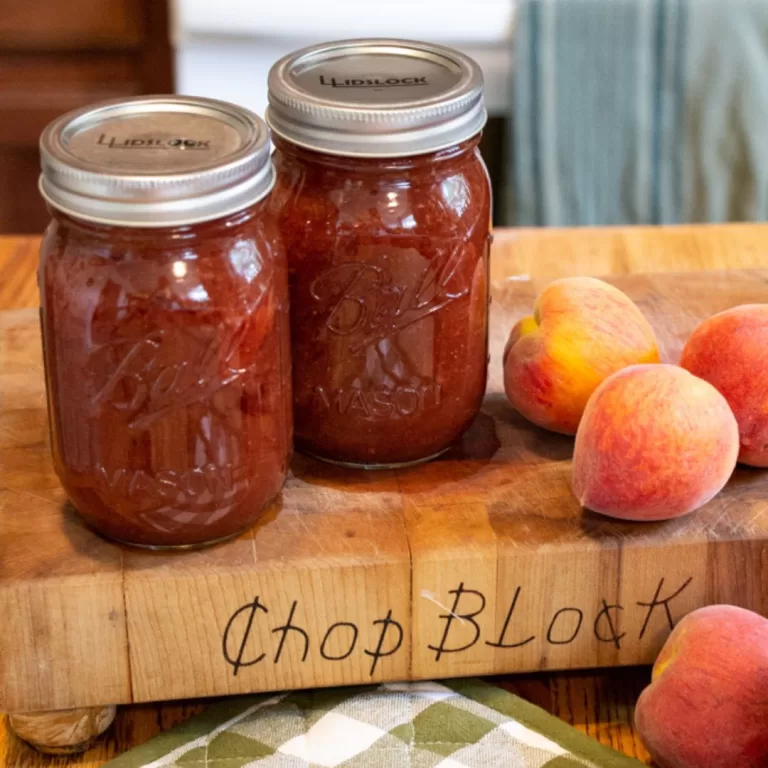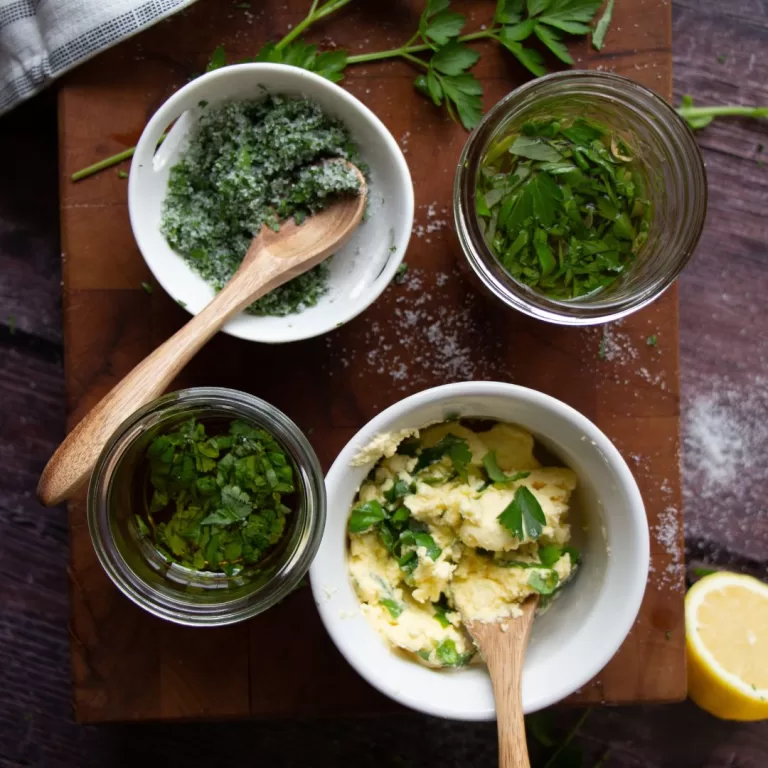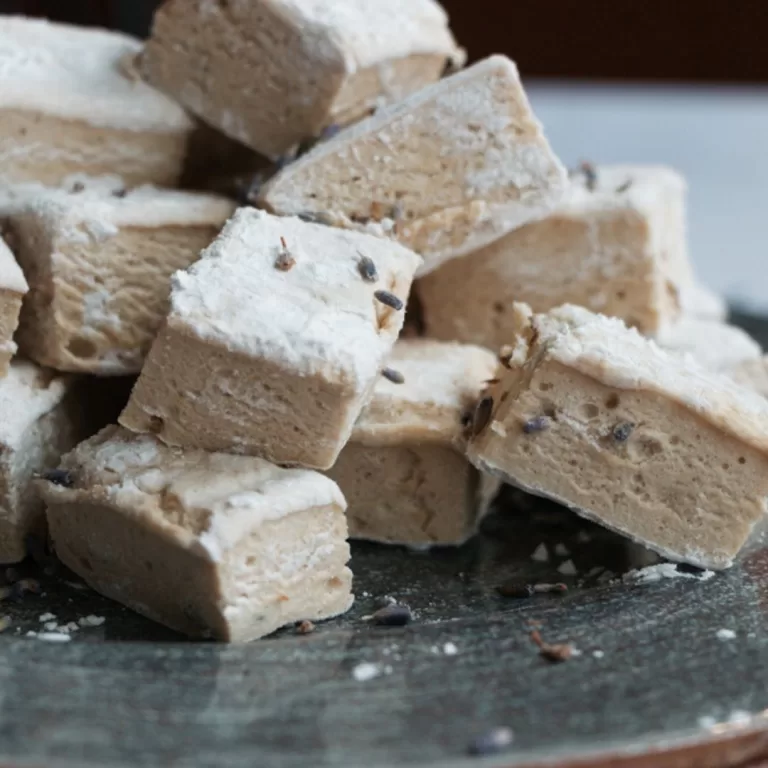Drying Peaches: A Simple and Easy Guide for Beginners
As a northerner living in the South, peaches have become a beautiful symbol of the start of summer. They are just so pretty! Sometimes I find myself with more of them than I can consume before they start to spoil. Thankfully, I discovered that drying peaches is a fantastic way to preserve them! This process not only allows me to enjoy delicious peaches all year round but also helps cut down on food waste.

I made the big mistake of purchasing too many peaches from my local farm in the past, and I could not process and can them all fast enough! I find that drying peaches is one of the easiest ways to preserve them for the year.
Drying peaches is a fairly simple and straightforward process. It begins with selecting ripe, unblemished fruit, and then thoroughly washing and drying the peaches. Afterward, I slice them into thin, uniform pieces to guarantee even drying. There are different techniques one can use for drying peaches, such as air drying, oven drying, or using a food dehydrator. Each method has its own advantages and considerations, which I will share in the following paragraphs.
Types of Peaches
Peaches can be broadly categorized into two main types: clingstone peaches and freestone peaches.
Clingstone peaches have flesh that clings to the stone or pit, making them a bit more challenging to eat and cut. They are often used in canned peach products due to their firmness and ability to maintain their shape during processing. Clingstone peaches can further be classified into:
- Yellow clingstone peaches: They have a vibrant yellow/orange flesh, a sweet taste, and a pleasing aroma.
- White clingstone peaches: These have a pale, white flesh with a slightly more delicate flavor compared to their yellow counterparts.

On the other hand, freestone peaches have flesh that easily separates from the stone, making them ideal for eating fresh or using in recipes like pies, cobblers, and salads. Freestone peaches can also be divided into:
- Yellow freestone peaches: These have a juicy, yellow/orange flesh that is both sweet and slightly tart, making them popular for a variety of dishes.
- White freestone peaches: With a sweeter, milder flavor than the yellow variety, the pale, white flesh of these peaches is perfect for eating on its own or in desserts.
In terms of flavor profile, yellow peaches tend to have a more tangy-sweet taste, while white peaches have a more delicate, sweeter taste. So, depending on your preference and what you plan to use them for, any of these types of peaches could be a perfect choice.
For this project, I am using yellow clingstone peaches picked from my local farm. But the type of peach you dry is totally up to you! Truth be told, I loathe getting the stone out of peaches. If they aren’t perfectly ripe, it is nearly impossible. You will notice below that I just ended up cutting around them (Hey! My knife skills leave a lot to be desired. Don’t judge).
How to Dry Peaches
As an Amazon Associate, I earn from qualifying purchases. Please visit my privacy + disclosure page for more details.
Supplies
Yield: 4-6 dried peaches should fit into a pint jar for storage purposes.

The dehydrator I own is a cheap and easy option to get you started on your dehydrating journey. Truth be told, I really want an Excalibur dehydrator. However, I got this one for $10 off of Facebook marketplace, so I went for it. I always advocate for shopping second-hand when you can! I linked my current dehydrator and my dream dehydrator below.

Preparing Peaches for Drying
Optional: You can begin by carefully removing the peach skin with the paring knife or peeler, making sure not to waste the precious peach flesh beneath the surface. I am choosing to dry my peaches with the skin on for ease, to keep them held together better, and because my intended purpose is for tea, so I don’t really care about the texture. The skins may not be preferable if you plan to dehydrate these to eat whole.
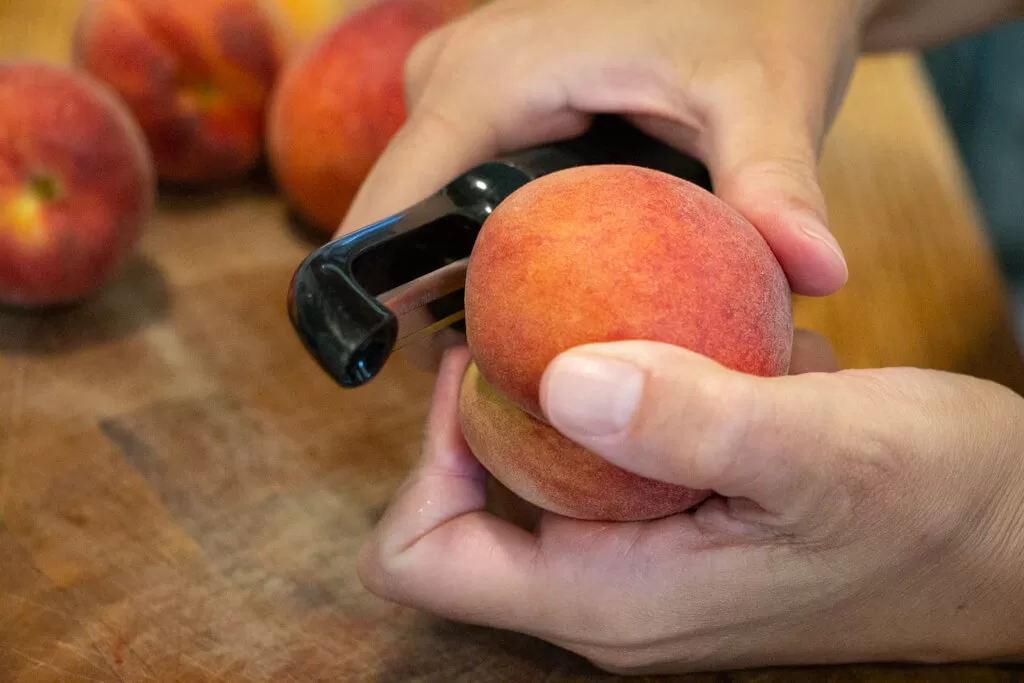
1. Grab a sharp knife, preferably a paring knife. It is perfect for getting a clean and precise slice.
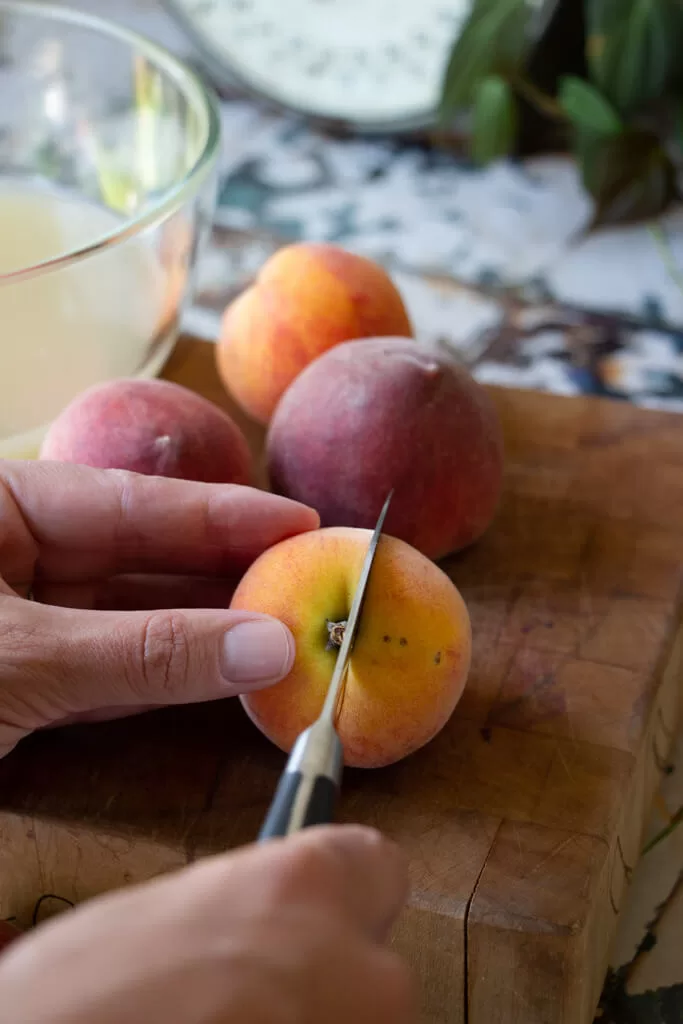
2. Proceed to slice peaches using the same sharp knife. Aim for thin even slices to ensure that they’ll dry uniformly during the drying process.

3. Prepare lemon juice solution by mixing equal parts lemon juice and water. Dunk the peach slices into the lemon juice solution. Immerse the peach slices in the lemon juice solution for 10 minutes, and remove using a slotted spoon. This step not only preserves the vibrant color of the peaches and avoids brown spots, but also slows down oxidation and loss of nutrients.
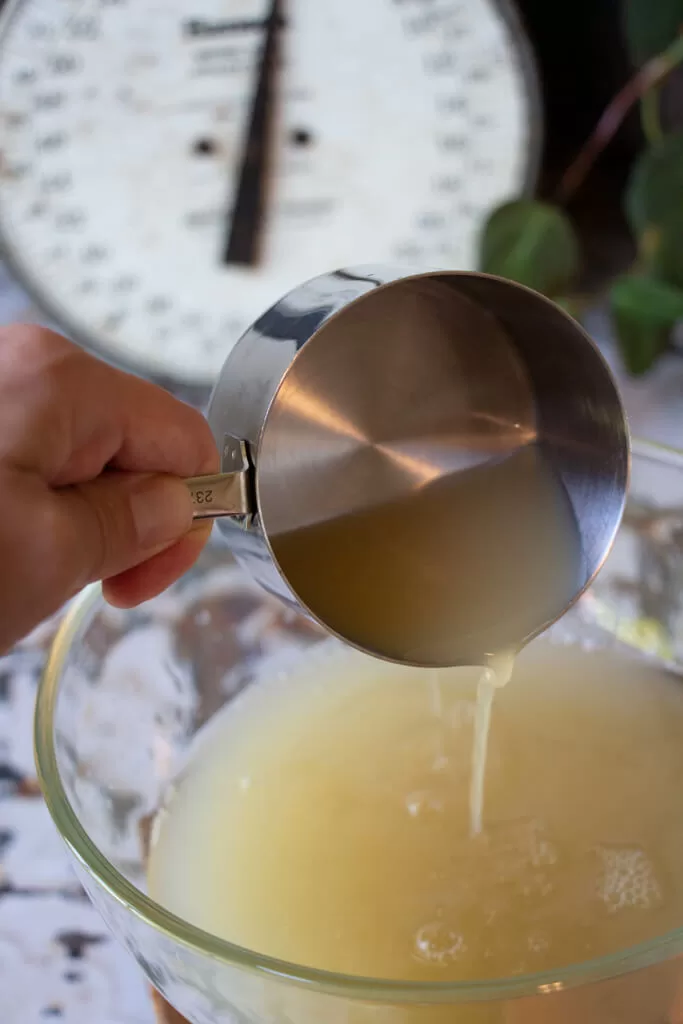

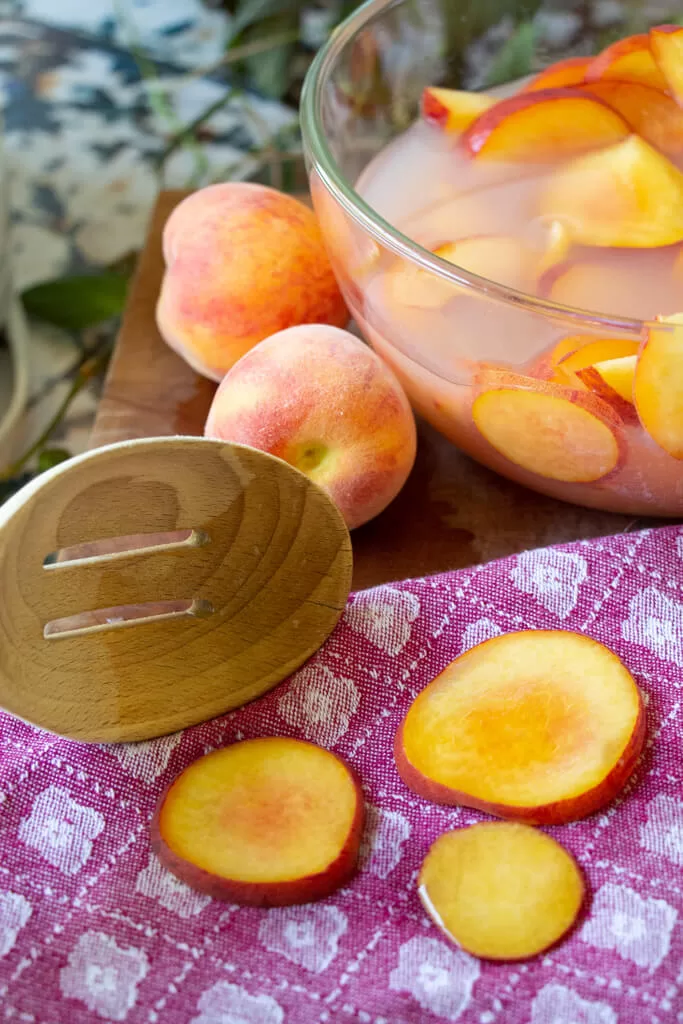
With all of these steps completed, my peaches are ready to be dried. It’s quite satisfying knowing that I now have a batch of peaches prepped and ready to transform into a delightful, chewy snack – or even as a topping for my favorite ice cream!

Side Project: Peach Lemonade
I couldn’t just let all of that peachy lemony goodness from the lemon juice solution go to waste! After removing all of my peach slices, I decided to pour the leftover juice over lots of ice with honey for a sweet and tart lemonade treat!
Methods for Drying Peaches
The two best methods for drying fruits are the dehydrator and oven.
Air Drying Peaches
I would not recommend air-drying fruit. Air-drying fruit is a traditional preservation method that involves leaving fruit out in the open air to dry naturally at room temperature. While air-drying fruit can be the easiest method, you run into a major risk of spoilage, and uneven drying. It will also take many days to complete. I would only use this method if I did not have access to these other resources.
Drying in the Dehydrator
My favorite method to dry fruit is using a food dehydrator. I find it efficient and convenient. Best of all, it doesn’t heat up the house as much as the oven. On the day I did this, it was 90F outside and it got quite toasty!
1. Place peach slices on drying trays, ensuring they’re in a single layer.

2. Follow the manufacturer’s instructions for proper temperature and timing.
My dehydrator requires drying peaches at 135F for 6 hours.



Drying in the Oven
If you do not own a dehydrator, you can dry your peaches in an oven. You have to be very careful with this method, as you risk burning the fruit.
1. Preheat the oven to its lowest setting, usually around 170°F (75°C).
2. Arrange the peach slices in a single layer on oven racks, with enough space for air circulation. I am using an oven-safe cooling rack.
3. Place the racks in the oven and leave the door slightly ajar to allow moisture to escape. It typically takes 2 hours for the peaches to dry fully. It may vary significantly from oven to oven, so check often!

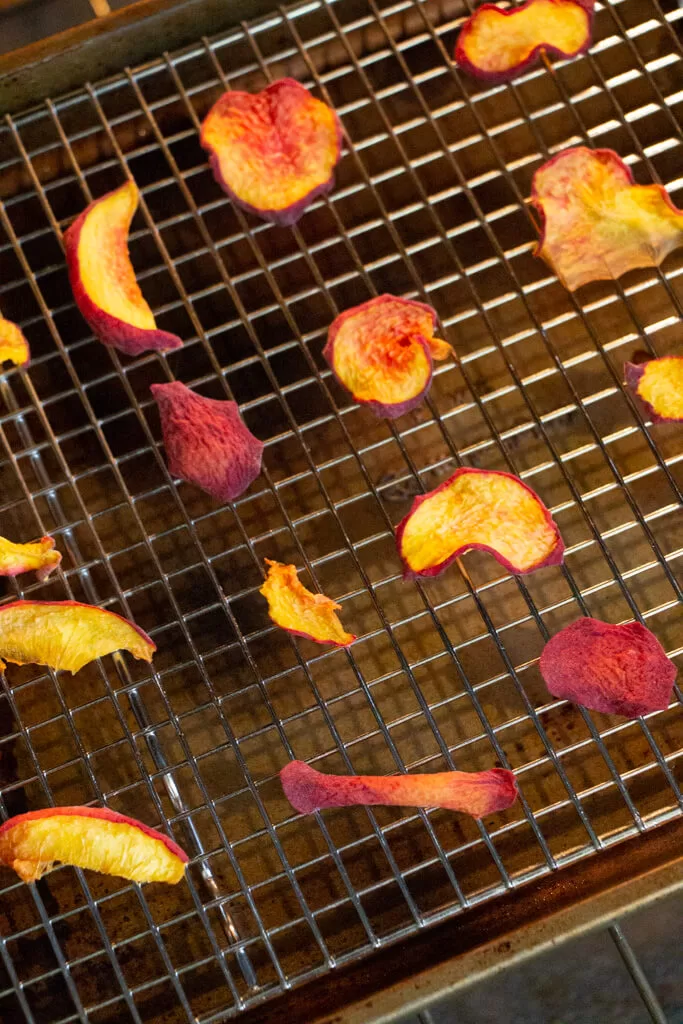
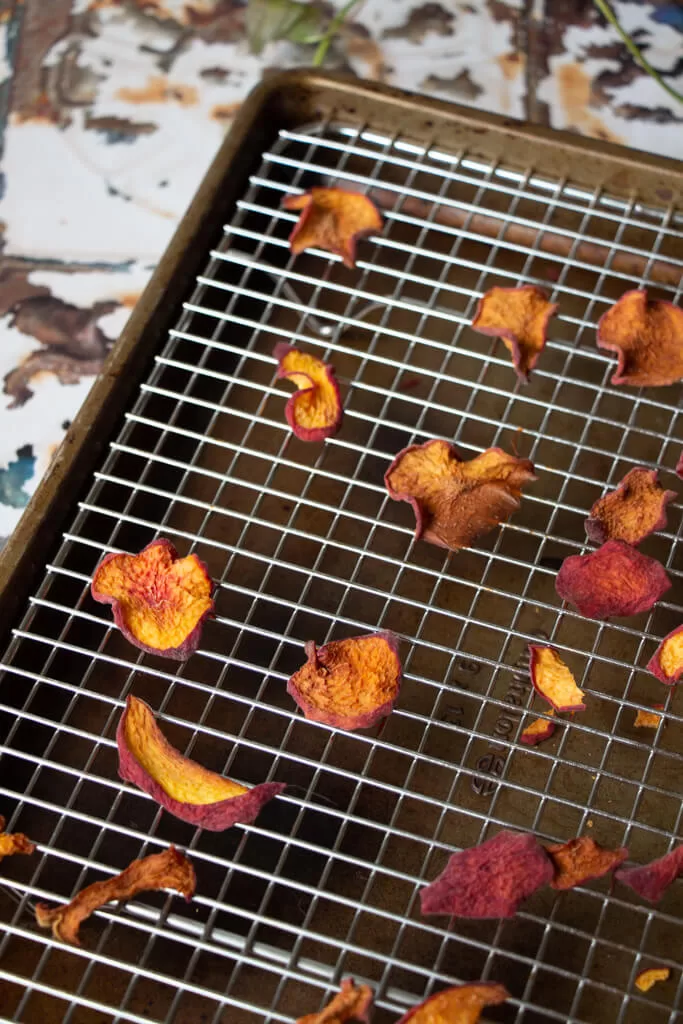
Keep in mind that drying times may vary due to humidity, thickness of the slices, and the specific drying method used. Just be patient and attentively check the progress of your peaches to achieve the perfect dried snack! Your peaches are done if they crack when you bend them. To test, let a piece cool for 5 minutes, bend, and see if it cracks. If it is still flexible, it needs more time.
I think the dehydrator definitely does a better job of drying evenly and maintaining a better texture and appearance of the fruit.
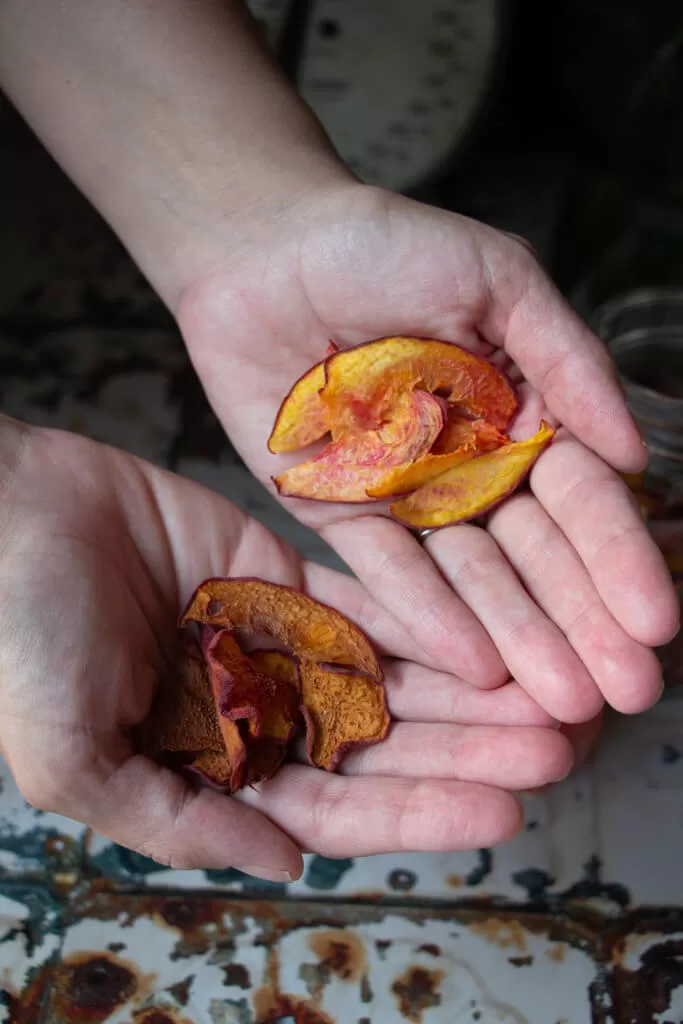
Storing Dehydrated Peaches
Storing dehydrated peaches is easy, and they can last a long time if done right. According to the National Center for Home Food Preservation guidelines for drying fruits, they should keep well for 6-12 months.
Before storing peaches, ensure that they are completely cool. This helps prevent condensation inside the storage container. Be sure to airtight containers or vacuum-sealed bags to keep moisture and air out. Storing dehydrated peaches in these containers helps maintain their flavor, texture, and nutritional value.
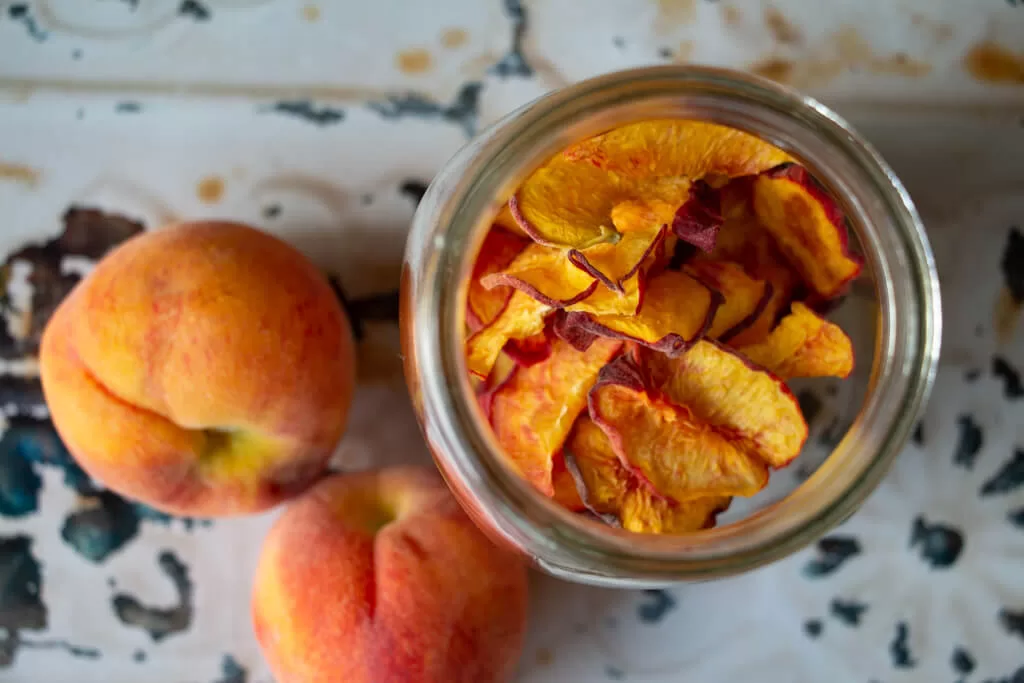
Ways to store dehydrated peaches:
- Sealable glass jars or another airtight container
- Food-grade plastic containers with tight lids
- Vacuum-sealed bags
Optional: You add an oxygen absorber inside the container to help control moisture. These packets can be easily found online, and they really make a difference in keeping your peaches fresh.
Store the dehydrated peaches in a cool, dry, and dark place, like a pantry or cupboard. Avoid exposing them to extreme temperatures or direct sunlight, as this can cause the peaches to spoil faster. When properly stored, dehydrated peaches can last up to a year or even longer.
Label your containers with the contents and date of dehydration. This helps keep track of the dehydrated peaches and use them efficiently.
Following these storage tips has helped me maintain the freshness and taste of my dehydrated peaches and continue enjoying them as a delicious, satisfying snack.
Health Benefits of Dried Peaches
Dried peaches offer a number of health benefits due to their high nutrient content. Here are some of the health benefits of dried peaches:
- High in fiber: Dried peaches are a great source of dietary fiber, which can help improve digestion and promote feelings of fullness.
- Rich in vitamins and minerals: Dried peaches contain a variety of essential vitamins and minerals, including vitamin C, vitamin A, potassium, and iron.
- Low in calories: Dried peaches are relatively low in calories compared to many other dried fruits, making them a great option for snacking.
FAQs about Drying Peaches
Dehydrating peaches is a great way to create a healthy and delicious snack that can be enjoyed at any time. Dried fruit is an excellent option for long term storage, and dehydrating peaches is an easy way to preserve this delicious fruit. By properly preparing peaches for dehydration and ensuring they are completely dry before storing, you can enjoy the sweet taste of peaches all year round. Whether you choose to eat them as a snack or add them to your favorite recipes, dehydrated peaches are a versatile and flavorful addition to any diet. So why not try dehydrating your own peaches today and enjoy the taste of summer all year round!
More Food Preservation Methods
Pin it for Later!


About the Author:
I’m Brittany, totally modern and mainstream turned crunchy mama!
Read more here about how I went from a totally incompetent cook and hyper-consumer to striving to live a more meaningful life from scratch.
I can’t wait to share my modern homesteading journey with you and I hope I inspire you to join along!

